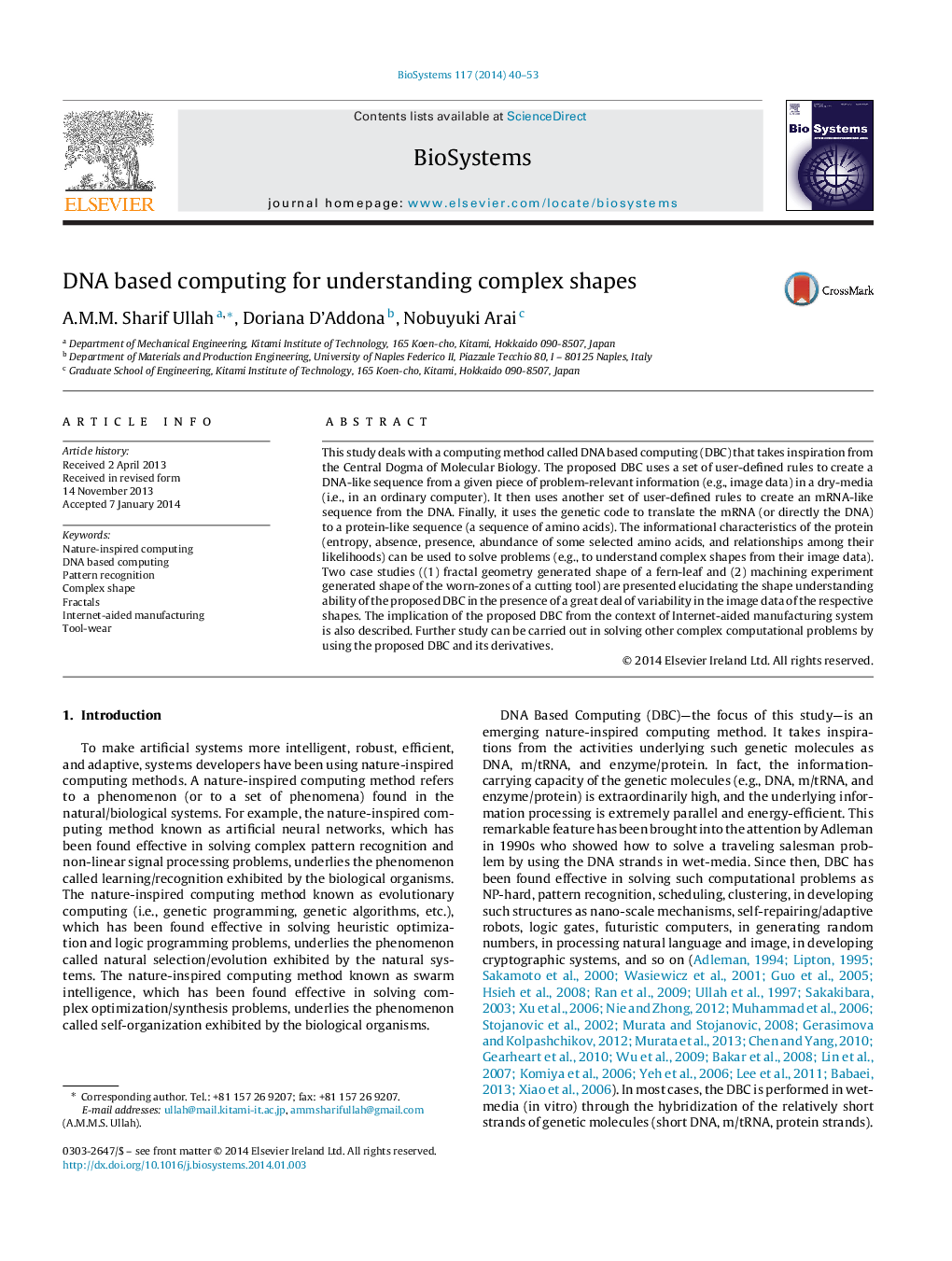| Article ID | Journal | Published Year | Pages | File Type |
|---|---|---|---|---|
| 2076046 | Biosystems | 2014 | 14 Pages |
This study deals with a computing method called DNA based computing (DBC) that takes inspiration from the Central Dogma of Molecular Biology. The proposed DBC uses a set of user-defined rules to create a DNA-like sequence from a given piece of problem-relevant information (e.g., image data) in a dry-media (i.e., in an ordinary computer). It then uses another set of user-defined rules to create an mRNA-like sequence from the DNA. Finally, it uses the genetic code to translate the mRNA (or directly the DNA) to a protein-like sequence (a sequence of amino acids). The informational characteristics of the protein (entropy, absence, presence, abundance of some selected amino acids, and relationships among their likelihoods) can be used to solve problems (e.g., to understand complex shapes from their image data). Two case studies ((1) fractal geometry generated shape of a fern-leaf and (2) machining experiment generated shape of the worn-zones of a cutting tool) are presented elucidating the shape understanding ability of the proposed DBC in the presence of a great deal of variability in the image data of the respective shapes. The implication of the proposed DBC from the context of Internet-aided manufacturing system is also described. Further study can be carried out in solving other complex computational problems by using the proposed DBC and its derivatives.
